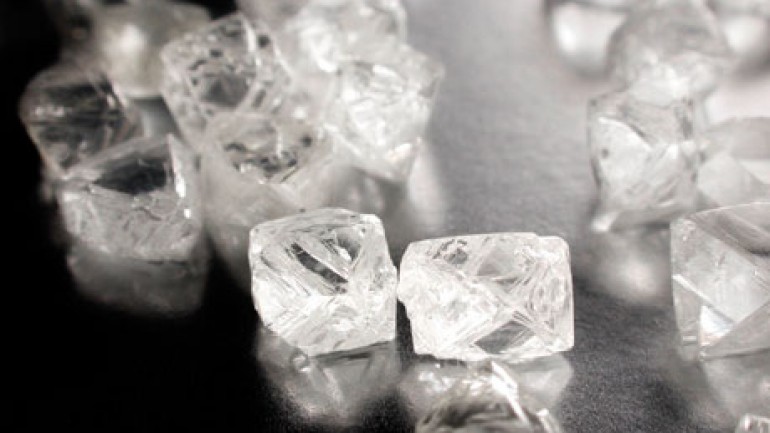Diamonds are made out of carbon, highly organized carbon, that is. Geologists are still guessing how diamonds formed in the Earth from 1 billion to 3 billion years ago, according to a recent study in the journal Nature, but they think the recipe follows something like this:
1. Bury carbon dioxide 100 miles into Earth.
2. Heat to about 2,200 degrees Fahrenheit.
3. Squeeze under pressure of 725,000 pounds per square inch.
4. Quickly rush towards Earth’s surface to cool.
If the process sounds a little difficult, thank a synthetic diamond manufacturer: There are now two ways to make diamonds in the laboratory.
The first synthetic method is called high pressure, high temperature (HPHT for short). It’s the closest thing to the diamond-producing bowels of the Earth, subjecting graphite (yes, the stuff in a No. 2 pencil, which is made from pure carbon) to intense pressure and heat. Tiny anvils in an HPHT machine squeeze down on the graphite as intense electricity zaps it, producing a gem-quality diamond in just a few days. These diamonds, however, aren’t as pure as natural diamonds because a metallic solution is mixed in with the graphite.
The other diamond-producing method — called chemical vapor deposition — turns its back on intense pressure but cranks out diamonds more flawless than nature can produce. Manufacturers place a piece of diamond into a depressurizing chamber, then zap natural gas with a microwave beam. As the gas is heated to almost 2,000 degrees, carbon atoms “rain” down onto the diamond in the chamber and stick to it, growing a perfect sheet of diamond overnight.





An awesome documentry with a brief explanation explaining how diamonds are made. A great work by BBC.